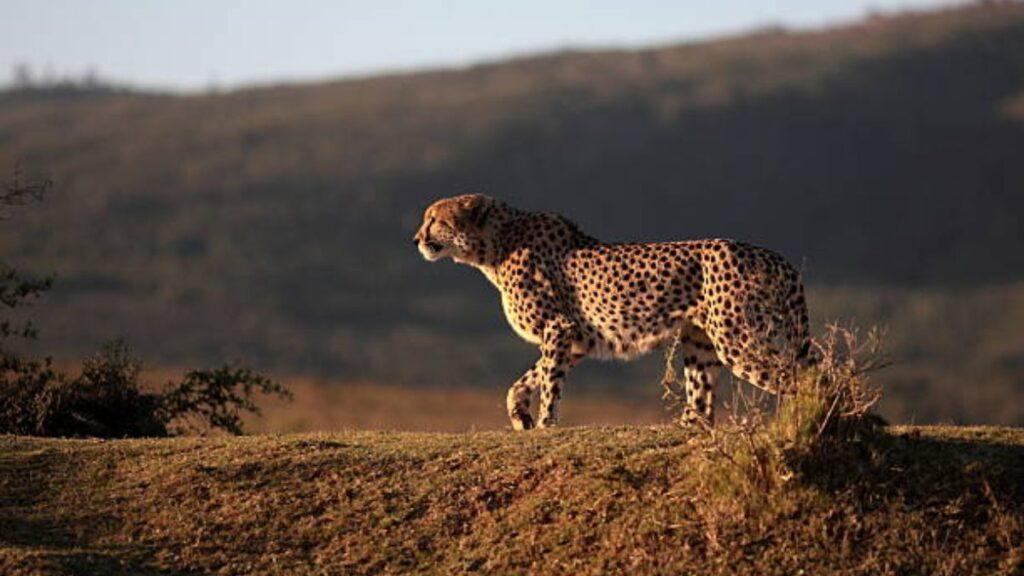What Makes Cheetahs The Fastest Land Animal?

The cheetah is the fastest land mammal on Earth, having the potential to run at over 112 kmph. Adapted with a slender build and large lungs, it can dash. With fast-twitch muscles, they help in ultra-speedy acceleration, which is critical in getting one’s prey. It can maintain that speed for only a little while, however, because it will overheat. That is why conservation efforts are so crucial to keeping them alive through protecting their habitats. Cheetahs are the wonders of nature, underlying our responsibility to secure biodiversity.
The Cheetah, scientifically known as Acinonyx jubatus, is synonymous with speed and holds the title of the fastest animal on land worldwide. Reaching full speed from 0 to 100 kilometers per hour within three seconds, these big cats keep up their pace to a top speed of 112 kmph over a short distance. This remarkable adaptation is due to an exceptional combination of biological and physiological characteristics that evolution has provided it over time.
What makes a Cheetah so fast?
Cheetah’s aerodynamically slim body structure is the most essential requisite that makes it a speedy beast. Weighing on a scale between 35 to 70 kg, their less weight allows a rapid acceleration without involving high energy costs. Their long legs and flexible backbone are coordinated to maximally extend the length of strides and the number of strides. A cheetah can take a 26-foot stride in an entire run, and it goes through as many as 150 strides in a minute. This is also aided by their semi-retractable claws, helping for better grip on the ground in the same way that spikes are installed on the shoes of sprinters.
The capacity for the cheetah’s astonishing sprinting is tied in with its specialized respiratory system. Thanks to their wide nasal passages, through which they can also intake massive volumes of air, fueling their large lungs and enormous heart, the cheetah’s anatomical aeration can quickly experience an increase in delivery to its muscular tissues: the key to managing a high-speed pursuit is that when sprinting, a cheetah’s respiratory rate accelerates from a resting rate of about 60 respirations per minute to a genuinely mind-boggling 150 respirations per minute. This fast rate of respiration is most important in sustaining the oxygen-enriched blood supply that allows the cheetah to maintain and continue bursting at an unbelievable speed of up to 120 kmph. The cooperation between the respiratory and circulatory system in this animal is an ideal example of evolutionary adaption, thereby allowing the predator to perform with excellence in the service of nature as one of the best hunters.
The Role of its Tail

The cheetah has another critical component in its high-speed chases: the tail. The tail then acts as a rudder, enabling balance and maneuverability in tight turns or pursuing agile prey across the open savannas of Africa or parts of Iran.
The Black Tear Marks on the Face

These black “tear” marks may also reduce the glare of the sun, thus aiding these cats to see better. Cheetahs are small among big cats, thin, and long-legged, and their spine is highly flexible, allowing an extended stride length, assisting them in high speed. Unlike most of the other large cats, cheetahs have semi-retractable claws which provide extra grip during their sprints.
At the muscular level, fast-twitch fibers responsible for rapid, powerful contraction are highly concentrated in the muscles of cheetahs. These fibers enable them to hit the speeds of over 70 mph that they require to catch mostly the gazelles, their primary food. The high speed combined with agility has evolved for its feeding behavior. Since it feeds on these fleet-footed ungulates, the fibers have been a significant development that enhances successful hunting.
The speed is not without its limitations
The cheetah’s remarkable speed is not without its limits. These fantastic cats can sprint for only 20 to 30 seconds before their bodies max out. Not to be outdone, the cheetahs have a brilliant strategy: they do a lot of silent creeping up on prey and minimizing distances at which they begin an attack. By eliminating long-distance sprints, the cats decrease both overheating danger and take their chances on getting food from these plants.
Their phenomenal speed aside, cheetahs are very stealthy in stalking their prey, moving in as close as possible before they make that stunning chase to make the catch. They will most often hunt during the day so as not to meet competition from larger predators. The distinctive tear marks are black and brilliant in color, running from the inner corners of the eyes down to the sides of their mouth, helping them reduce glare from the sun and focus better on prey.
The Conservation Efforts
Conservation efforts for cheetahs are critical, as their populations have dwindled due to habitat loss and human-wildlife conflict. Organizations like the Cheetah Conservation Fund, founded in Namibia in 1990, strive, most importantly, for the conservation of this beautiful species and its habitats. Since then, CCF—Cheetah Conservation Fund—has led in holistic strategies in conservation, which have done a great deal in arresting the dwindling numbers of cheetahs. These include innovations such as the Livestock Guarding Dog program, which significantly reduces human–cheetah conflict by protecting livestock from predation. In addition, with its habitat restoration scheme—specifically, the Bushblok project—CCF works to renew land that has been infected with invasive species; in other words, it expands habitat availability, which has been curtailed on behalf of the cheetah. Lastly, education is done locally and internationally to raise sensitivity about the conservation issue concerning cheetahs, while research improves attempts to better understand cheetah biology and ecology.
The cheetah is the epitome of speed, an amazement to evolution—flawlessly matching anatomy and physiology to be atop the world as the fastest beast living on land. Their existence can only be taken to exalt wonders and processes like natural selection in ecosystems where, again, all species have their importance brought into play. Cheetahs amaze us, not by their speed alone but by reminding us of the interconnectedness of life and our responsibility to preserve it. They are certainly among the fastest-running land mammals and have been recorded at speeds of 70 miles per hour, holding such a velocity in very short sprints of up to 500 meters. They reach an average lifespan in the wild of eight to ten years, while in human care, their average lifespan maybe twelve to fifteen years.
Do you know that most of the cheetahs that are around now are descended from a small number of them that survived the last ice age? One conclusion to draw from such genetic bottlenecking is that today’s cheetahs are, by default, so genetically close that they have practically turned into genetic clones. So cool, right?







